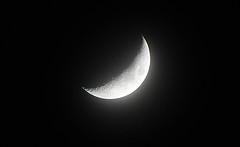How To Observe Venus Through A Telescope .
 Venus – the brightest object in the sky after the Moon and the Sun and, therefore, can be found, even in the daytime. Venus is usually visible in the evening after sunset or before sunrise in the morning on a background of dawn. When growing (or aging) Moon is close to Venus, view the sky in the west (or east) is a spectacular sight. Venus is easily recognized because of her brilliance far surpasses the brightest stars. The hallmark of the planet is its smooth white. Venus, as well as Mercury, not receding into the sky at a great distance from the Sun.
Venus – the brightest object in the sky after the Moon and the Sun and, therefore, can be found, even in the daytime. Venus is usually visible in the evening after sunset or before sunrise in the morning on a background of dawn. When growing (or aging) Moon is close to Venus, view the sky in the west (or east) is a spectacular sight. Venus is easily recognized because of her brilliance far surpasses the brightest stars. The hallmark of the planet is its smooth white. Venus, as well as Mercury, not receding into the sky at a great distance from the Sun.
Venus – the third-brightest object in Earth’s skies after the Sun and the Moon, reaching apparent magnitude of -4.6. Since Venus is closer to the Sun than Earth, it never seems too far from the Sun: the maximum angular distance between it and the sun is 47,8 . Its maximum brightness of Venus reaches just before sunrise or after some time after sunset, which gave rise to call her as Evening Star or Morning Star. Observations of the phases of Venus by astronomers using telescopes have shown that the observed phase of Venus systematically deviates from theoretical. It is therefore of interest to systematically sketch the phases of Venus, which can be made by observing the planet through a telescope the size of 60 mm and above, for example with the aid of a telescope Celestron PowerSeeker 60AZ.